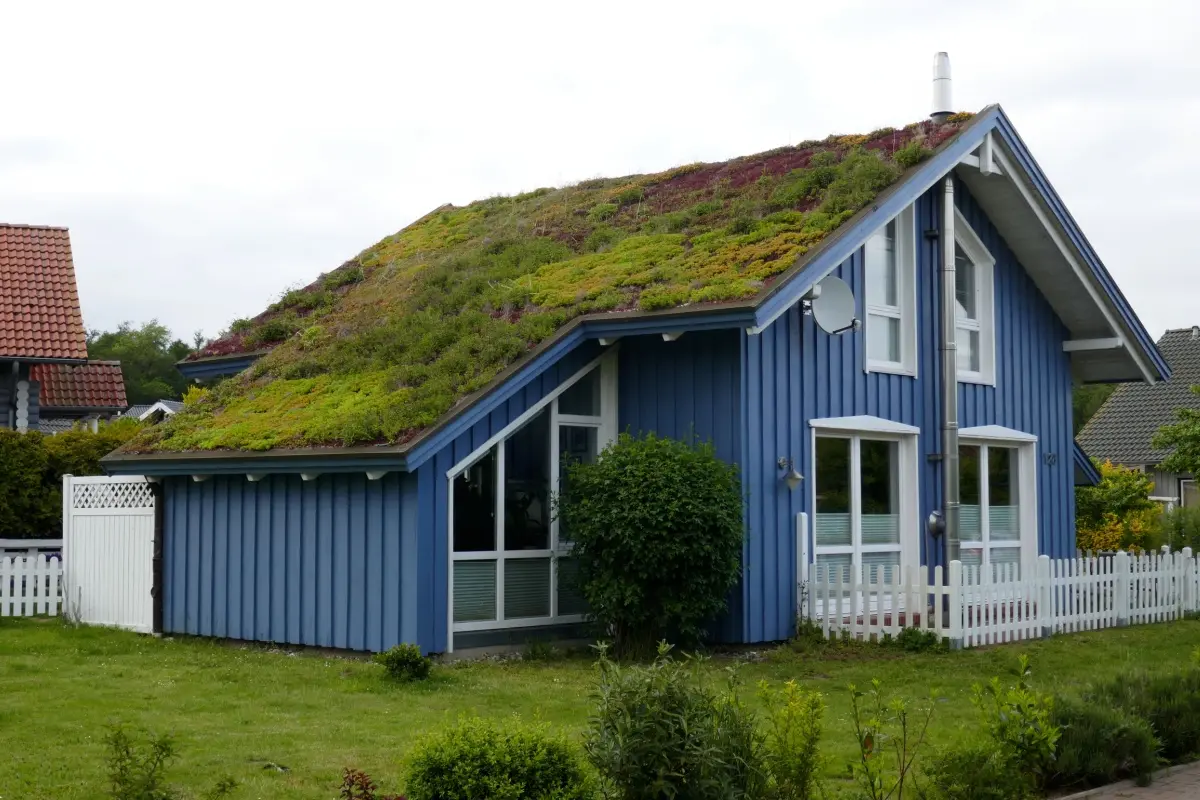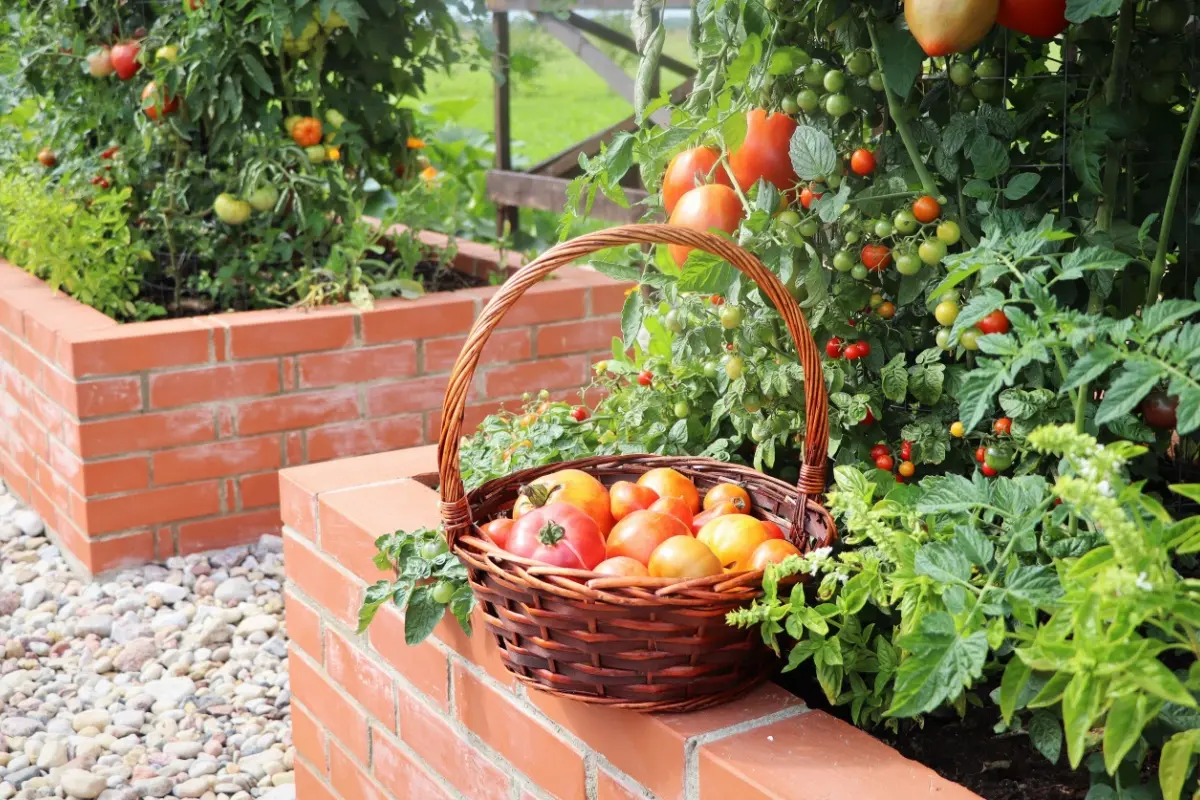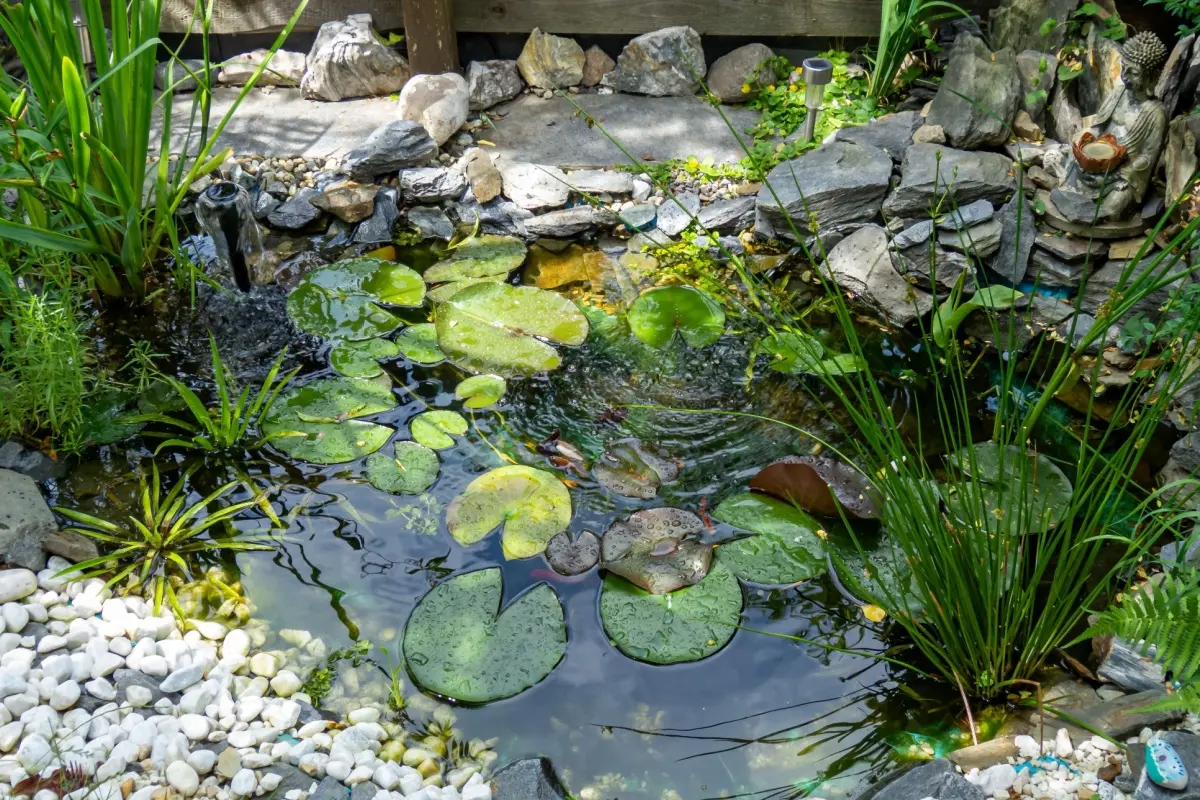Did you know gardens and yards can improve people’s mental health and happiness? Recent studies show that individuals with access to more green spaces report higher levels of happiness and life satisfaction.
So, as a landscaping business owner, you’re not only positively contributing to the environment; your services are also significantly improving the well-being of your clients. But with over 600,000 landscaping businesses in the U.S., how does your company stand out?

Of course, offering high-quality landscaping services is a surefire way. However, you must also keep up with market demand to be at the forefront of the industry. Below, we explore some of the top landscaping industry trends you can explore to place your company on the path to success.
Landscaping and Lawn Care Industry Statistics
The landscaping and lawn care industry is quite large – as of 2023, it generated over $170 billion. And it shows no signs of slowing – by 2029, it is estimated that the industry will bring in over $220 billion.
As of 2023, 1.3 million people were working in the landscaping industry. And by 2024, over 170,000 new technician jobs were available. The employment rate also shows no signs of slowing – by 2032, it is expected to grow by 3%.
8 Landscaping Industry Trends
Landscape trends come and go, but any savvy business owner knows you have to capitalize on them while in demand. So, if you’re looking to leverage the latest landscaping trends, here are some options to explore:
- Sustainable Landscaping
Increasingly, homeowners are exploring more eco-friendly landscaping options in an effort to reduce their carbon footprint and minimize environmental impact. As a result, sustainability has become one of the new trends in landscaping, helping homeowners incorporate eco-conscious practices into their yards.

The overall goal of sustainable landscaping is to reduce reliance on pesticides and other synthetic chemicals. The aim is to promote biodiversity, conserve water, and create self-sustaining and low-maintenance outdoor spaces.
Here’s how homeowners are incorporating sustainability into their landscaping:
- Harvesting rainwater to irrigate lawns and gardens. Not only does this reduce reliance on municipal water, it can also lower utility costs.
- Incorporating native plants, trees, and grasses since they are more acclimated to the climate and soil conditions. This increases plant resistance and typically reduces maintenance and watering.
- Xeriscaping in areas with minimal rainfall. This method makes use of drought-tolerant plants to help reduce water usage.
- Composting and mulching to eliminate reliance on artificial fertilizers. Using organic materials can naturally improve soil health, minimize weeds, and reduce landfill waste.
- Adding flowering plants to attract pollinators like bees, butterflies, and hummingbirds. This can improve biodiversity and create a self-sustaining landscape.
- Integrating artificial turf or “no-mow” ground cover to reduce maintenance and watering costs. Low-growing grasses like clover reduce reliance on fertilizers and require very little upkeep.
Demand has significantly increased for landscaping companies offering sustainable services and eco-friendly options. Landscaping companies with specialized expertise in sustainable landscaping typically charge 10% to 20% more.
Landscaping businesses can earn between $50,000 and $100,000 annually from sustainable landscaping projects alone.
- Smart Technology
Automated technology and smart devices are quickly becoming part of every industry, and landscaping is no exception. Smart technology improves convenience, efficiency, and sustainability, which is why it has become one of the newest trends in the landscaping industry.

Smart landscaping tech is a must-have as it reduces the time and effort needed to maintain a yard. These devices also reduce electricity and water usage by 20% to 50%. On average, homeowners can save between $100 and $400 per year on utility bills.
Here are popular ways that smart technology is being incorporated into landscaping:
- Smart irrigation systems track weather conditions in real time and automatically adjust watering schedules. This helps minimize maintenance, lower costs, and conserve water. Smart systems can also be combined with drip irrigation systems for additional efficiency. Drip systems water directly at the roots, helping reduce runoff and evaporation.
- Robotic lawnmowers are similar to automated vacuum cleaners – they are programmed to mow lawns at regular intervals. They’re a convenient way to maintain a lawn without requiring much manual labor.
- Weather and soil sensors can be used alongside smart irrigation systems to enhance watering schedules and reduce water consumption. These sensors monitor moisture levels in the soil to determine the best time to water. When used with smart irrigation systems, they can automatically signal when it is time to water.
On average, landscaping companies offering smart technology boost their annual revenue by 20% to 30%. Your business can make between $2,000 and $5,000 per smart irrigation installation. However, offering smart sensor and irrigation system installation packages could bump up your revenue per project to nearly $10,000.
- Living Roofs and Walls
Homeowners who really want to embrace the natural aesthetic can extend their landscaping to their walls and roofs, also known as green roofs and vertical gardens. Living roofs and walls are a trending landscape idea because they help add more greenery and promote biodiversity in urban areas.

This option is also especially appealing to homeowners who might not have adequate acreage to create a traditional front or backyard. Rather than going out, they can go upwards. Here’s how a living roof is created:
- Waterproofing materials like rubberized asphalt, thermoplastic polyolefin (TPO), or ethylene propylene diene monomer (EPDM) are installed.
- Root barriers made of thick plastic are placed on top to protect the roof from root penetration and damage.
- Lightweight gravel, perforated plastic panels, or mats are added to provide adequate drainage and prevent waterlogging.
- Filter fabric is installed to prevent soil from washing away.
- Substrate, including compost, sand, and perlite, is added to provide nutrients.
- Low-maintenance and native plants are installed based on local sunlight levels, climate, and rainfall patterns.
Vertical gardens are installed in a very similar way to living roofs. The main difference is that the first step is to build a plastic or metal support structure. Then, panels must be installed to hold the plants vertically and direct them in the proper growth direction.
In addition to improving aesthetics and the local ecology, living roofs and walls offer the following benefits:
- Provide natural insulation and reduce heating and cooling costs by up to 25%.
- Reduce runoff and minimize pressure on drainage systems by absorbing up to 75% of rainwater.
- Naturally improves air quality by filtering dust and pollutants in densely populated cities.
If your landscaping business begins offering living wall and roof installations, it could increase annual revenue by 20% to 40%. Since this trend is highly specialized, landscaping companies offering this expertise could make $50,000 to $100,000 more every year.
- Edible Landscapes
While it may sound strange initially, edible landscaping is exactly what it sounds like – you can eat what you grow. This trend involves adding fruit, vegetable, herb, and nut-producing plants to your landscaping. While ornamental plants are aesthetically pleasing, incorporating an edible landscape appeals to homeowners who also want the functionality of harvestable crops.

Many homeowners are hopping on the sustainability trend, and adding an edible landscape can be a great way to promote self-sufficiency and homegrown food in their lifestyles. This trend can help reduce grocery bills while also improving organic and fresh produce consumption.
Here’s how you can help homeowners incorporate this trend:
- Plant herbs like rosemary and lavender and fruit shrubs like raspberries and blueberries as border plants along pathways.
- Build vertical structures for climbing vegetables like peas and beans, which can help save ground space.
- Depending on your local climate, plant native fruit and nut trees like apples, cherries, and almonds. These trees can also provide natural shade.
- Leverage companion planting to improve natural pest control and plant health. To do so, add mutually beneficial plants close to each other, like tomatoes and marigolds.
Having specialized knowledge and expertise in edible landscaping can give your company a competitive advantage in generating more revenue. Typically, installations for edible landscapes range between $5,000 and $20,000.
- Wellness and Therapeutic Landscaping
As mentioned previously, outdoor spaces are proven to promote better mental health and well-being. For homeowners looking for an outdoor oasis that promotes relaxation, wellness, and therapeutic landscaping are making a splash as the newest trend.

Therapeutic gardens help reduce stress, anxiety, and depression. They are especially beneficial for individuals who face cognitive challenges like dementia, as they help stimulate their five senses. And the benefits also extend to physical health by providing space for walking and yoga.
Wellness and therapeutic landscapes often include the following:
- Water features like ponds, streams, and fountains
- Sensory gardens with fragrant flowers and herbs that have varying colors and textures
- Decks, lawns, or shaded areas for yoga, stretching, or meditation
- Native and healing gardens full of lavender, aloe vera, and chamomile
More and more homeowners are investing in their physical, mental, and emotional health. As a result, professionals see an average 20% to 40% uptick in annual revenue when they offer therapeutic and wellness landscaping services. For a simple sensory garden, the project could net your business around $10,000.
- Natural Ponds
The sound of a babbling stream is a natural relaxer that helps create a calming and serene atmosphere. Like therapeutic landscaping, natural ponds also promote wellness and improve mental health. These ponds mimic natural, self-sustaining ecosystems by using native plants, rocks, fish, and biological filtration.

Unlike traditional water features, natural ponds rely on ecological and biological processes rather than chemicals to maintain water clarity and health. As a result, this reduces manual upkeep and maintenance for these landscaping features.
Natural ponds often include:
- Aquatic plants like lilies, reeds, and cattails to naturally filter the water and provide oxygen
- Stones and gravel to create natural cascades, streams, and waterfalls. Creating tiers helps aerate the water and keep it clean of algae
- Koi and goldfish to eat algae and insects
Landscaping companies that install natural ponds make an average of 15% to 25% more annually. These features cost around $10,000 and upwards, depending on the size and complexity.
- Hardscaping
While landscaping is synonymous with plants, hardscaping is a new trend in the industry that uses only non-living elements to create functional and aesthetically pleasing outdoor spaces. Hardscaping is ideal for homeowners who prefer very little to no upkeep.

Hardscapes lean more towards the functional side, offering low maintenance and durable outdoor spaces to socialize, dine, and relax. These areas can often be used year-round, especially if weather-resistant features are added, including shades and heaters. Homeowners can completely forgo natural features in their yards or opt for only hardscaping or seamlessly blend both.
Hardscapes include the following features:
- Natural stone, brick, concrete, or wood patios and decks for outdoor kitchens, dining areas, fire pits, seating areas, or grills
- Stone, brick, or gravel walkways and pathways lined with natural shrubs and flowers
- Stone, concrete, or wood retaining walls to manage soil erosion or create a tiered garden
Of all the trends listed so far, hardscaping is the most expensive. This is great for landscaping businesses, as they can make 30% to 50% more in annual revenue when they offer these services. On average, patio additions cost around $30,000.
- Landscaping Financing
Many of the landscaping trends mentioned above don’t come cheaply. While this is a positive for businesses looking to increase their earning potential, the price tag for these services is often a major hurdle for clients.
It might have been the case before when homeowners had to put off landscaping services because they couldn’t afford the upfront cost. But that’s not the case anymore. This leads us to our final trend – landscaping financing.
Businesses that offer landscaping financing give their clients the option to pay for services in budget-friendly installments. Rather than an upfront cost, your clients can apply for a payment plan that aligns with their budget. If approved, they’ll pay for services over time, and you can start the project immediately.
If you want to learn how to offer customer financing for your landscaping business, read our full-length article for more details.
Challenges and Opportunities in the Landscaping Industry
Unfortunately, landscaping businesses aren’t immune to challenges. Almost every business in the industry faces the following difficulties, but there are ways you can leverage them to create opportunities for success:
- Several federal and state agencies have instituted water usage, fertilizer, and land management regulations that affect landscaping companies. These agencies include the Environmental Protection Agency (EPA), the Department of Agriculture (USDA), and state environmental protection agencies. Adhering to these regulations will often result in higher operating costs for additional training, certifications, and licenses. Failing to comply can also result in fines and legal fees.
- However, landscaping companies can use these regulations as a growth opportunity by specializing in water-efficient services, organic and eco-friendly practices, and stormwater management. Expertise in these areas may allow your company to command higher rates.
- Purchasing new landscaping tools and equipment will require a significant upfront cost. However, failing to invest in these technologies can cause your company to lag behind the competition. You may also need to invest in training courses and certifications for highly specialized tech.
- Despite the high cost, investing in new technologies can increase efficiency and competitiveness. The new tech, equipment, and tools should be part of your landscaping marketing tactic, helping you attract more clients. Offering more specialized services with this technology can also help your business charge higher rates, increasing annual revenue.
- Your company’s revenue potential can be greatly affected by the time of year. Based on the season, service demand may drop, causing cash flow issues and revenue gaps.
- This challenge could present a great opportunity to diversify your landscaping company’s service offerings to maintain year-round projects. You can begin offering snow removal, weatherproofing, or spring preventative maintenance. Creating full-service packages can also be another option to ensure steady revenue.
- Another significant challenge for landscaping businesses is navigating the various licensing and certification requirements. These can vary widely depending on the state or municipality, and failing to comply can lead to hefty fines or even business shutdowns.
- While the process of obtaining these landscaping licenses and certifications can be time-consuming and costly, it can also be an opportunity for your business. By meeting or exceeding industry standards, your company can stand out from competitors. Certified expertise builds trust with clients, allowing you to charge premium rates for specialized services. Moreover, certifications in eco-friendly and sustainable landscaping practices can attract environmentally conscious customers, expanding your market reach.
Conclusion
As new trends continue to emerge in the landscaping industry, businesses have more opportunities to evolve and position themselves for success. Ultimately, whichever trend or trends you adopt, always remember to offer quality services and client support to ensure long-term growth.


